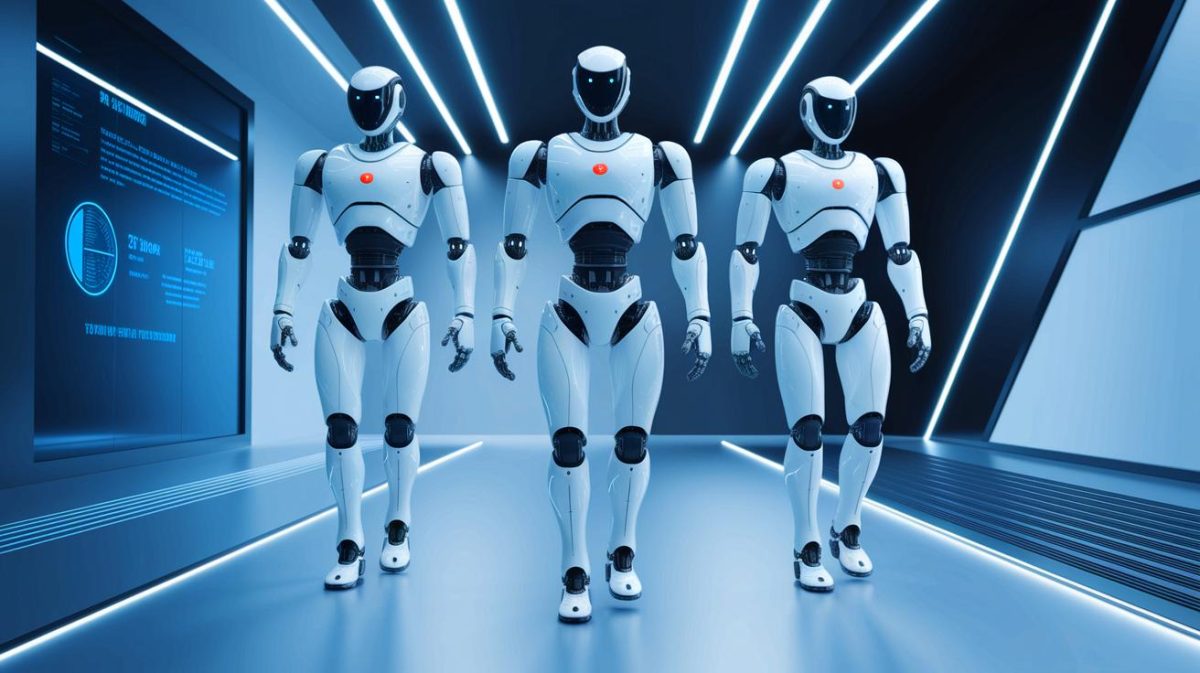| IN A NUTSHELL |
|
The field of robotics is undergoing a transformative shift as humanoid robots begin to exhibit increasingly human-like movements. Among the frontrunners in this technological evolution is Figure, a U.S. robotics firm that has advanced the development of its humanoid robot, Figure 02. Utilizing cutting-edge techniques like reinforcement learning, these robots are now capable of walking with a fluid, natural motion. This breakthrough not only marks a significant leap in robotics but also raises intriguing questions about the future capabilities of AI-powered machines and their role in our lives.
Humanoids Walk Naturally
Figure has made remarkable strides in developing a natural humanoid walking motion using reinforcement learning (RL), a sophisticated AI approach where a controller learns through trial and error. The Figure 02 robot now walks with a human-like gait thanks to this innovative method. The company’s RL controller was trained in a high-fidelity, GPU-accelerated physics simulation, allowing years of data to be simulated within just hours. During this process, thousands of virtual humanoids with varying physical parameters were run in parallel, exposing them to diverse real-world scenarios.
This method enabled the creation of a single neural network policy capable of managing the robots’ movements seamlessly. A significant advantage of Figure’s approach is its ability to transfer this trained policy directly from simulation to real-world robots without additional tuning, a process known as “zero-shot” transfer. This ensures robust and human-like walking performance across various environments, enhancing the adaptability and reliability of the robots.
AI Robots Advance
The Figure 02 robots now demonstrate human-like movements, such as heel strikes, toe-offs, and synchronized arm swings. These advancements were achieved through Figure’s RL training process, which rewards robots for mimicking human walking trajectories while optimizing for velocity tracking, energy efficiency, and robustness. In a recent video, Figure AI showcased ten Figure 02 robots operating on the same RL neural network without modifications, underscoring the scalability of its technology and the potential to deploy thousands of robots without manual adjustments.
As 2025 unfolds, Figure AI anticipates a pivotal year as it begins production, increases robot shipments, and makes strides in home robotics. The firm positions itself as a formidable competitor in the humanoid robotics sector, alongside notable entities like Tesla’s Optimus, Agility Robotics’ Digit, and Chinese companies such as UBTech Robotics. To further expand its capabilities, Figure AI recently introduced Helix, a Vision-Language-Action model that enables robots to execute complex tasks using natural language instructions.
The Role of Reinforcement Learning
The application of reinforcement learning in robotics has been revolutionary, primarily because it allows robots to learn complex behaviors through a series of rewards and penalties. For Figure 02, RL has meant the difference between rigid, mechanical movement and a more fluid, human-like walking style. The process involves training the robots in a controlled environment where they can simulate countless scenarios, effectively compressing years of learning into mere hours.
This accelerated learning process is not only efficient but also adaptable. By exposing robots to a wide array of situations, they develop robust strategies for real-world interaction. The ability to transfer learned behaviors from simulation to reality without additional adjustments is a testament to the power of RL in shaping the future of robotics. As these technologies continue to evolve, the boundaries of what AI and robotics can achieve are continually being pushed.
Implications for the Future
The advancements in humanoid robotics, as demonstrated by Figure AI, have profound implications for the future. As robots become more adept at performing human-like tasks, the potential applications are vast, ranging from industrial automation to personalized home assistance. The integration of models like Helix, which allow robots to understand and respond to natural language, further expands their capabilities, making them invaluable tools in overcoming complex challenges.
As Figure AI continues to innovate, it is clear that we are on the cusp of a new era in robotics. The ability of these machines to learn and adapt so rapidly poses both opportunities and challenges. How will society adapt to a world where robots are not just tools but active participants in our daily lives? The journey ahead promises to be as exciting as it is transformative, inviting us to rethink the relationship between humans and machines in the years to come.
As humanoid robots like Figure 02 become increasingly sophisticated, they will undoubtedly play a larger role in various aspects of human life. The journey of these robots from simulation to reality opens up new avenues for exploration and innovation. As we move forward, what new possibilities and challenges will emerge in this evolving partnership between humans and machines?
Did you like it? 4.6/5 (27)






Are these robots available for purchase yet? 🤔
It’s amazing to see how far robotics has come. Can’t wait to see these in action!
Can Figure 02 robots dance like humans too? That would be fun to watch! 💃🕺
Does anyone else find the idea of human-like robots a bit unsettling? 😅
How does Figure 02 compare to Tesla’s Optimus in terms of capability?